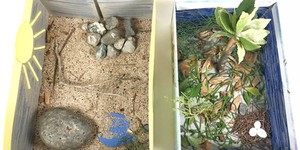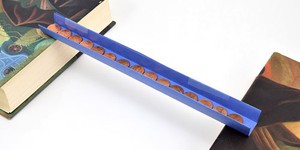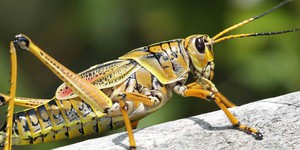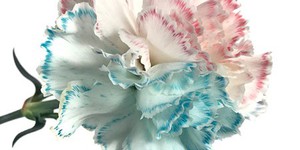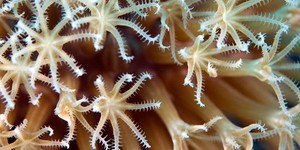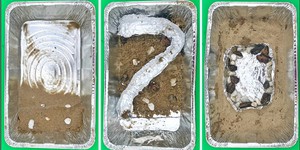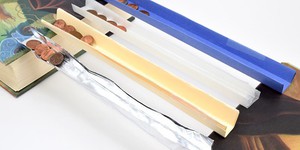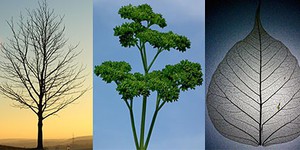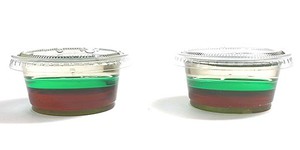Second Grade Lesson Plans (21 results)
Science Buddies' second grade science projects are the perfect way for second grade students to have fun exploring science, technology, engineering, and math (STEM). Our second grade projects are written and tested by scientists and are specifically created for use by students in the second grade. Students can choose to follow the science experiment as written or put their own spin on the project.
For a personalized list of science projects, second graders can use the Science Buddies Topic Selection Wizard. The wizard asks students to respond to a series of simple statements and then uses their answers to recommend age-appropriate projects that fit their interests.
Let us help you find a science project that fits your interests, with our Topic Selection Wizard.|
Select a resource
Sort by
|
Lesson Plan
Grade: Kindergarten-2nd
9 reviews
Get creative with your students in this hands-on lesson plan! Students will use mostly natural materials to build a shoebox habitat that mimics a real-life habitat for an animal of their choice. As they present their miniature habitats to each other, students realize that not all habitats are suitable for all animals. Each animal species needs the resources of a specific habitat to survive.
Read more
NGSS Performance Expectations:
Lesson Plan
Grade: Kindergarten-2nd
19 reviews
Your students have probably walked or ridden over a bridge at some point in their lives. In this engineering activity they will design and make bridges out of folded pieces of paper, and test how much weight they can hold with pennies. How does the shape of a bridge affect its strength? Let your students explore and find out with this lesson!
This lesson can be expanded to a second lesson looking at how the material a bridge is made out of can change its strength; see second lesson for details.
Read more
NGSS Performance Expectations:
Lesson Plan
Grade: 2nd-5th
8 reviews
There are thousands of species of insects in our world, and each are adapted to survive in their habitat. In this activity, students will learn what an insect is and what some of their adaptations are. Then they will put their knowledge into play by "creating" an insect that is adapted to live in their assigned environment.
Read more
Lesson Plan
Grade: Kindergarten-5th
3 reviews
In this fun engineering lesson plan, your students will build a rocket-catching device to help a falling rocket land vertically without crashing, using simple and readily-available materials.
Middle school
and
high school
versions of this lesson plan are also available. This lesson was part of the 2025 Science Buddies Engineering Challenge.
Read more
NGSS Performance Expectations:
Lesson Plan
Grade: 2nd
6 reviews
Your students might know that plants need water to survive. But how does a plant "drink" and get water from the soil all the way up to its' leaves? In this lesson plan, students will observe how plants (flowers and celery) suck up dye-stained water, which makes the petals and leaves change color! This allows students to visualize the process of how water moves through a plant.
Read more
NGSS Performance Expectations:
New
Lesson Plan
Grade: 6th-9th
In this lesson plan, students will model the complex biologic manufacturing process. First, they will model the cellular expansion process that occurs in a bioreactor. Then, students will lyse the cells to isolate the proteins from the dyed cell debris. Lastly, they will model the advanced filtration process to purify proteins so they can be used as medicines.
Read more
NGSS Performance Expectations:
Lesson Plan
Grade: 2nd-6th
5 reviews
By building an edible coral polyp, students will learn the anatomy of coral and be able to explain why corals are animals, rather than plants.
Read more
NGSS Performance Expectations:
Lesson Plan
Grade: 2nd
9 reviews
In this lesson plan, students investigate different types of water bodies on Earth by making models of lakes, oceans, and rivers inside an aluminum pan using various materials and real water. By describing each water body and sharing their observations about their differences and similarities, students will be able to identify the typical characteristics of each water body.
Read more
NGSS Performance Expectations:
Lesson Plan
Grade: 2nd
4 reviews
Steel, concrete, wood—real bridges are built from many different materials. How do engineers decide which materials to use? In this activity, your students will expand on the previous paper bridges lesson plan by building and testing bridges made from different materials.
Read more
NGSS Performance Expectations:
Lesson Plan
Grade: Kindergarten-2nd
Nature is full of objects with many different shapes. Some of these shapes display obvious regularities or distinct patterns, such as stripes, waves, symmetry, or spirals. Each of these natural patterns has evolved over a very long time and serves a specific function that usually helps a plant, animal, or other organism to survive. In this lesson plan, students explore the branching pattern of trees, plants, and leaves. They will make drawings and a leaf rubbing to compare different branching…
Read more
NGSS Performance Expectations:
Lesson Plan
Grade: 2nd
7 reviews
When discussing material properties, most of us usually think of solid materials and material properties such as hardness, flexibility, or strength. However, liquids are characterized by distinct properties, too. Some of these properties overlap with those of solids, like density or transparency, but others are more specific to liquids. Viscosity—the resistance of a fluid to flow—and surface tension, are two examples of properties that are specifically used to characterize liquids.…
Read more
NGSS Performance Expectations:
|

